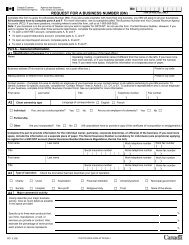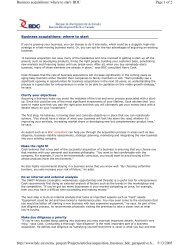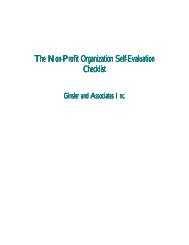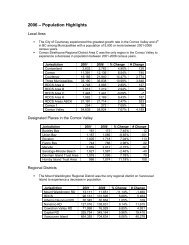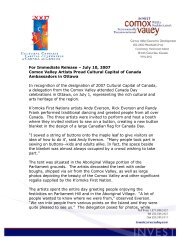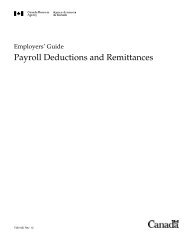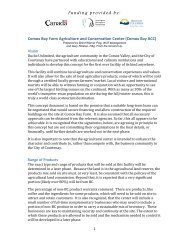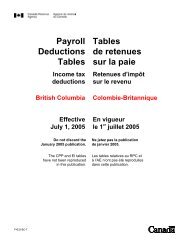qprev_HBB Manual 2.qxd - Small Business BC
qprev_HBB Manual 2.qxd - Small Business BC
qprev_HBB Manual 2.qxd - Small Business BC
Create successful ePaper yourself
Turn your PDF publications into a flip-book with our unique Google optimized e-Paper software.
keep records of actual costs, the cost approach topricing will help you make sure all your costs arecovered, which may not be true in a – marketapproach to pricing.The drawback of pricing to the market is thatyour unit costs may be higher than others sellingin the market. If you match your prices on theirs,you may make a loss on each sale!Cost Approach to PricingPrice must cover all costs of goods or servicessold – including production costs of supplies,materials, fixed overhead, and time/labour – plusa profit. Chapter 5 will explain how to calculateand estimate these costs, presented as: costs ofproduction, labour and non-labour, includingoverhead or fixed costs as well as supplies andmaterials.Use this formula to set a per unit price based onyour costs:The selling price per unit:$56.50 + $16.95 = $73.45(or $74 rounded up for use in projections andestimates)<strong>Business</strong>es can set different profit rates – forexample 15 per cent profit on supplies andmaterials, 20 per cent profit on labour/time, and25 per cent profit on overhead. These morecomplicated approaches to pricing usuallyemerge in response to the special needs of aparticular business.If your research shows similar products orservices available to the market for much lessthan you could provide them for, you may haveto adjust your profit margin and the return youwant to get, or decide to provide enoughspecialized service or selection that the marketwill pay the extra. Alternatively, you may have todecide you cannot afford to make this item orprovide this service and look for something elseto do.total costs of production per unit + desireddollar profit per unit = selling price per unitCalculating Selling Price Per UnitFor example: A craft item requires...Costs of Productionsupplies and materials $12.00time/labour 2.25 hrs x 16.00/hr 36.00overhead 8.50Total costs of production $56.50Percentage rate of profit desired: 30%(you need to use the decimal form for thiscalculation – the decimal form of 30%is 0.30)The desired dollar profit in this case is0.30 x $56.50 = $16.95Break-Even PriceThe break-even sales point for a business is whenthe selling price covers all costs of producing anitem or providing a service – with no profit. Thisthird approach to pricing uses a formula tocalculate a selling price. The three numbersneeded in the break-even pricing formula are:variable cost per unit, fixed costs, and volume.Remember that variable costs is another name forsupplies and materials costs. Volume measureshow much, in this case how much sales activity.Chapter 5 covers sales volume projections for thefirst year of business operation in more detail.The formula for calculating the Break-EvenPrice is:46solutions for small business home-based business



